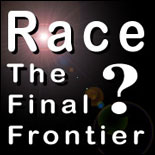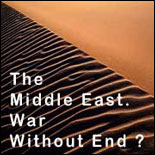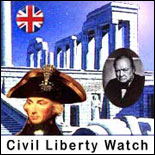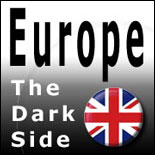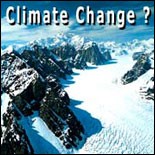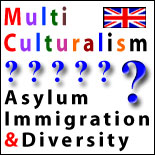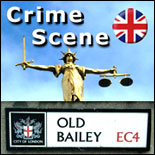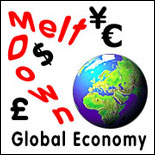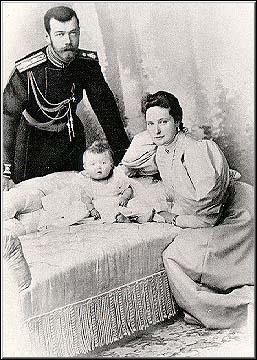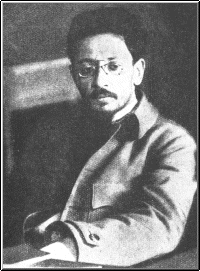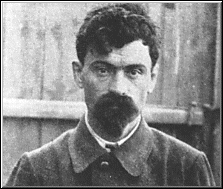'The Twenty Million'
As it turned out, the Soviet toll in human lives and suffering proved
to be much higher than Zinoviev's murderous rhetoric suggested. Rarely,
if ever, has a regime taken the lives of so many of its own people.
Citing newly-available Soviet KGB documents, historian Dmitri Volkogonov,
head of a special Russian parliamentary commission, recently concluded
that "from 1929 to 1952 21.5 million [Soviet] people were repressed.
Of these a third were shot, the rest sentenced to imprisonment, where
many also died."
Olga Shatunovskaya, a member of the Soviet Commission of Party Control,
and head of a special commission during the 1960s appointed by premier
Khrushchev, has similarly concluded: "From January 1, 1935 to June
22, 1941, 19,840,000 enemies of the people were arrested. Of these,
seven million were shot in prison, and a majority of the others died
in camp." These figures were also found in the papers of Politburo
member Anastas Mikoyan.
Robert Conquest, the distinguished specialist of Soviet history,
recently summed up the grim record of Soviet "repression" of it own
people:
It is hard to avoid the conclusion that the post-1934 death toll
was well over ten million. To this should be added the victims of
the 1930-1933 famine, the kulak deportations, and other anti-peasant
campaigns, amounting to another ten million plus. The total is thus
in the range of what the Russians now refer to as 'The Twenty Million'."
A few other scholars have given significantly higher estimates.
The Tsarist Era in Retrospect
With the dramatic collapse of Soviet rule, many Russians are taking
a new and more respectful look at their country's pre-Communist history,
including the era of the last Romanov emperor. While the Soviets -
along with many in the West - have stereotypically portrayed this
era as little more than an age of arbitrary despotism, cruel suppression
and mass poverty, the reality is rather different. While it is true
that the power of the Tsar was absolute, that only a small minority
had any significant political voice, and that the mass of the empire's
citizens were peasants, it is worth noting that Russians during the
reign of Nicholas II had freedom of press, religion, assembly and
association, protection of private property, and free labor unions.
Sworn enemies of the regime, such as Lenin, were treated with remarkable
leniency.
During the decades prior to the outbreak of the First World War,
the Russian economy was booming. In fact, between 1890 and 1913, it
was the fastest growing in the world. New rail lines were opened at
an annual rate double that of the Soviet years. Between 1900 and 1913,
iron production increased by 58 percent, while coal production more
than doubled. Exported Russian grain fed all of Europe. Finally, the
last decades of Tsarist Russia witnessed a magnificent flowering of
cultural life.
Everything changed with the First World War, a catastrophe not only
for Russia, but for the entire West.
 |
Monarchist Sentiment
In spite of (or perhaps because of) the relentless official
campaign during the entire Soviet era to stamp out every uncritical
memory of the Romanovs and imperial Russia, a virtual cult of
popular veneration for Nicholas II has been sweeping Russia
in recent years.
People have been eagerly paying the equivalent of several hours'
wages to purchase portraits of Nicholas from street vendors
in Moscow, St. Petersburg and other Russian cities. His portrait
now hangs in countless Russian homes and apartments. In late
1990, all 200,000 copies of a first printing of a 30-page pamphlet
on the Romanovs quickly sold out. Said one street vendor: "I
personally sold four thousand copies in no time at all. It's
like a nuclear explosion. People really want to know about their
Tsar and his family." Grass roots pro-Tsarist and monarchist
organizations have sprung up in many cities.
A public opinion poll conducted in 1990 found that three out
of four Soviet citizens surveyed regard the killing of the Tsar
and his family as a despicable crime. Many Russian Orthodox
believers regard Nicholas as a martyr. The independent "Orthodox
Church Abroad" canonized the imperial family in 1981, and the
Moscow-based Russian Orthodox Church has been under popular
pressure to take the same step, in spite of its long-standing
reluctance to touch this official taboo. The Russian Orthodox
Archbishop of Ekaterinburg announced plans in 1990 to build
a grand church at the site of the killings. "The people loved
Emperor Nicholas," he said. "His memory lives with the people,
not as a saint but as someone executed without court verdict,
unjustly, as a sufferer for his faith and for orthodoxy."
|
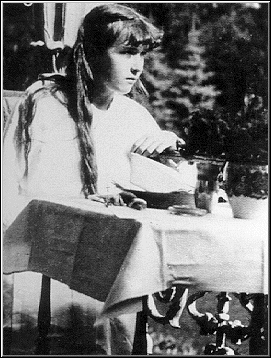
Anastasia |
On the 75th anniversary of the massacre (in July 1993), Russians
recalled the life, death and legacy of their last Emperor. In
Ekaterinburg, where a large white cross festooned with flowers
now marks the spot where the family was killed, mourners wept
as hymns were sung and prayers were said for the victims.
Reflecting both popular sentiment and new social-political
realities, the white, blue and red horizontal tricolor flag
of Tsarist Russia was officially adopted in 1991, replacing
the red Soviet banner. And in 1993, the imperial two-headed
eagle was restored as the nation's official emblem, replacing
the Soviet hammer and sickle. Cities that had been re-named
to honor Communist figures - such as Leningrad, Kuibyshev, Frunze,
Kalinin, and Gorky - have re-acquired their Tsarist-era names.
Ekaterinburg, which had been named Sverdlovsk by the Soviets
in 1924 in honor of the Soviet-Jewish chief, in September 1991
restored its pre-Communist name, which honors Empress Catherine
I.
Symbolic Meaning
In view of the millions that would be put to death by the Soviet
rulers in the years to follow, the murder of the Romanov family
might not seem of extraordinary importance. And yet, the event
has deep symbolic meaning. In the apt words of Harvard University
historian Richard Pipes:
The manner in which the massacre was prepared and carried
out, at first denied and then justified, has something uniquely
odious about it, something that radically distinguishes it
from previous acts of regicide and brands it as a prelude
to twentieth-century mass murder.
|
Another historian, Ivor Benson, characterized the killing of the Romanov
family as symbolic of the tragic fate of Russia and, indeed, of the
entire West, in this century of unprecedented agony and conflict.
The murder of the Tsar and his family is all the more deplorable because,
whatever his failings as a monarch, Nicholas II was, by all accounts,
a personally decent, generous, humane and honorable man.
The Massacre's Place in History
The mass slaughter and chaos of the First World War, and the revolutionary
upheavals that swept Europe in 1917-1918, brought an end not only
to the ancient Romanov dynasty in Russia, but to an entire continental
social order. Swept away as well was the Hohenzollern dynasty in Germany,
with its stable constitutional monarchy, and the ancient Habsburg
dynasty of Austria-Hungary with its multinational central European
empire. Europe's leading states shared not only the same Christian
and Western cultural foundations, but most of the continent's reigning
monarchs were related by blood. England's King George was, through
his mother, a first cousin of Tsar Nicholas, and, through his father,
a first cousin of Empress Alexandra. Germany's Kaiser Wilhelm was
a first cousin of the German-born Alexandra, and a distant cousin
of Nicholas.
More than was the case with the monarchies of western Europe, Russia's
Tsar personally symbolized his land and nation. Thus, the murder of
the last emperor of a dynasty that had ruled Russia for three centuries
not only symbolically presaged the Communist mass slaughter that would
claim so many Russian lives in the decades that followed, but was
symbolic of the Communist effort to kill the soul and spirit of Russia
itself.
Notes
- Edvard Radzinksy, The Last Tsar (New York: Doubleday, 1992), pp.
327, 344-346.; Bill Keller, "Cult of the Last Czar," The New York
Times, Nov. 21, 1990.
- From an April 1935 entry in "Trotsky's Diary in Exile." Quoted
in: Richard Pipes, The Russian Revolution (New York: Knopf, 1990),
pp. 770, 787.; Robert K. Massie, Nicholas and Alexandra (New York:
1976), pp. 496-497.; E. Radzinksy, The Last Tsar (New York: Doubleday,
1992), pp. 325-326.; Ronald W. Clark, Lenin (New York: 1988), pp.
349-350.
- On Wilton and his career in Russia, see: Phillip Knightley, The
First Casualty (Harcourt Brace Jovanovich, 1976), pp. 141-142, 144-146,
151-152, 159, 162, 169, and, Anthony Summers and Tom Mangold, The
File on the Tsar (New York: Harper and Row, 1976), pp. 102-104,
176.
- AP dispatch from Moscow, Toronto Star, Sept. 26, 1991, p. A2.;
Similarly, a 1992 survey found that one-fourth of people in the
republics of Belarus (White Russia) and Uzbekistan favored deporting
all Jews to a special Jewish region in Russian Siberia. "Survey
Finds Anti-Semitism on Rise in Ex-Soviet Lands," Los Angeles Times,
June 12, 1992, p. A4.
- At the turn of the century, Jews made up 4.2 percent of the population
of the Russian Empire. Richard Pipes, The Russian Revolution (New
York: 1990), p. 55 (fn.). By comparison, in the United States today,
Jews make up less than three percent of the total population (according
to the most authoritative estimates).
- See individual entries in: H. Shukman, ed., The Blackwell Encyclopedia
of the Russian Revolution (Oxford: 1988), and in: G. Wigoder, ed.,
Dictionary of Jewish Biography (New York: Simon and Schuster, 1991).
The prominent Jewish role in Russia's pre-1914 revolutionary underground,
and in the early Soviet regime, is likewise confirmed in: Stanley
Rothman and S. Robert Lichter, Roots of Radicalism (New York: Oxford,
1982), pp. 92-94. In 1918, the Bolshevik Party's Central Committee
had 15 members. German scholar Herman Fehst - citing published Soviet
records - reported in his useful 1934 study that of six of these
15 were Jews. Herman Fehst, Bolschewismus und Judentum: Das j�dische
Element in der F�hrerschaft des Bolschewismus (Berlin: 1934), pp.
68-72.; Robert Wilton, though, reported that in 1918 the Central
Committee of the Bolshevik party had twelve members, of whom nine
were of Jewish origin and three were of Russian ancestry. R. Wilton,
The Last Days of the Romanovs (IHR, 1993), p. 185.
- After years of official suppression, this fact was acknowledged
in 1991 in the Moscow weekly Ogonyok. See: Jewish Chronicle (London),
July 16, 1991.; See also: Letter by L. Horwitz in The New York Times,
Aug. 5, 1992, which cites information from the Russian journal "Native
Land Archives."; "Lenin's Lineage?"'Jewish,' Claims Moscow News,"
Forward (New York City), Feb. 28, 1992, pp. 1, 3.; M. Checinski,
Jerusalem Post (weekly international edition), Jan. 26, 1991, p.
9.
- Richard Pipes, The Russian Revolution (New York: Knopf, 1990),
p. 352.
- Harrison E. Salisbury, Black Night, White Snow: Russia's Revolutions,
1905-1917 (Doubleday, 1978), p. 475.; William H. Chamberlin, The
Russian Revolution (Princeton Univ. Press, 1987), vol. 1, pp. 291-292.;
Herman Fehst, Bolschewismus und Judentum: Das j�dische Element in
der F�hrerschaft des Bolschewismus (Berlin: 1934), pp. 42-43.; P.
N. Pospelov, ed., Vladimir Ilyich Lenin: A Biography (Moscow: Progress,
1966), pp. 318-319. This meeting was held on October 10 (old style,
Julian calendar), and on October 23 (new style). The six Jews who
took part were: Uritsky, Trotsky, Kamenev, Zinoviev, Sverdlov and
Soklonikov. The Bolsheviks seized power in Petersburg on October
25 (old style) - hence the reference to the "Great October Revolution"
- which is November 7 (new style).
- William H. Chamberlin, The Russian Revolution (1987), vol. 1,
p. 292.; H. E. Salisbury, Black Night, White Snow: Russia's Revolutions,
1905-1917 (1978), p. 475.
- W. H. Chamberlin, The Russian Revolution, vol. 1, pp. 274, 299,
302, 306.; Alan Moorehead, The Russian Revolution (New York: 1965),
pp. 235, 238, 242, 243, 245.; H. Fehst, Bolschewismus und Judentum
(Berlin: 1934), pp. 44, 45.
- H. E. Salisbury, Black Night, White Snow: Russia's Revolutions,
1905-1917 (1978), p. 479-480.; Dmitri Volkogonov, Stalin: Triumph
and Tragedy (New York: Grove Weidenfeld, 1991), pp. 27-28, 32.;
P. N. Pospelov, ed., Vladimir Ilyich Lenin: A Biography (Moscow:
Progress, 1966), pp. 319-320.
- "Zionism versus Bolshevism: A struggle for the soul of the Jewish
people," Illustrated Sunday Herald (London), February 8, 1920. Facsimile
reprint in: William Grimstad, The Six Million Reconsidered (1979),
p. 124. (At the time this essay was published, Churchill was serving
as minister of war and air.)
- David R. Francis, Russia from the American Embassy (New York:
1921), p. 214.
- Foreign Relations of the United States - 1918 - Russia, Vol. 1
(Washington, DC: 1931), pp. 678-679.
- American Hebrew (New York), Sept. 1920. Quoted in: Nathan Glazer
and Daniel Patrick Moynihan, Beyond the Melting Pot (Cambridge,
Mass.: 1963), p. 268.
- C. Jacobson, "Jews in the USSR" in: American Review on the Soviet
Union, August 1945, p. 52.; Avtandil Rukhadze, Jews in the USSR:
Figures, Facts, Comment (Moscow: Novosti, 1978), pp. 10-11.
- T. Emmons and B. M. Patenaude, eds., War, Revolution and Peace
in Russia: The Passages of Frank Golder, 1913-1927 (Stanford: Hoover
Institution, 1992), pp. 320, 139, 317.
- Louis Rapoport, Stalin's War Against the Jews (New York: Free
Press, 1990), pp. 30, 31, 37. See also pp. 43, 44, 45, 49, 50.
- Quoted in: Salo Baron, The Russian Jews Under Tsars and Soviets
(New York: 1976), pp. 170, 392 (n. 4).
- The Atlantic, Sept. 1991, p. 14.; In 1919, three-quarters of the
Cheka staff in Kiev were Jews, who were careful to spare fellow
Jews. By order, the Cheka took few Jewish hostages. R. Pipes, The
Russian Revolution (1990), p. 824.; Israeli historian Louis Rapoport
also confirms the dominant role played by Jews in the Soviet secret
police throughout the 1920s and 1930s. L. Rapoport, Stalin's War
Against the Jews (New York: 1990), pp. 30-31, 43-45, 49-50.
- E. Radzinsky, The Last Tsar (1992), pp. 244, 303-304.; Bill Keller,
"Cult of the Last Czar," The New York Times, Nov. 21, 1990.; See
also: W. H. Chamberlin, The Russian Revolution, vol. 2, p. 90.
- Quoted in: The New Republic, Feb. 5, 1990, pp. 30 ff.; Because
of the alleged anti-Semitism of Russophobia, in July 1992 Shafarevich
was asked by the National Academy of Sciences (Washington, DC) to
resign as an associate member of that prestigious body.
- R. Wilton, The Last Days of the Romanovs (1993), p. 148.
- Richard Pipes, The Russian Revolution (1990), p. 787.; Robert
K. Massie, Nicholas and Alexandra (New York: 1976), pp. 496-497.
- An article in a 1907 issue of the respected American journal National
Geographic reported on the revolutionary situation brewing in Russia
in the years before the First World War: " The revolutionary leaders
nearly all belong to the Jewish race, and the most effective revolutionary
agency is the Jewish Bund " W. E. Curtis, "The Revolution in Russia,"
The National Geographic Magazine, May 1907, pp. 313-314. Piotr Stolypin,
probably imperial Russia's greatest statesman, was murdered in 1911
by a Jewish assassin. In 1907, Jews made up about ten percent of
Bolshevik party membership. In the Menshevik party, another faction
of the Russian Social Democratic Labor Party, the Jewish proportion
was twice as high. R. Pipes, The Russian Revolution (1990), p. 365.;
See also: R. Wilton, The Last Days of the Romanovs (1993), pp. 185-186.
- Martin Gilbert, Atlas of Jewish History (1977), pp. 71, 74.; In
spite of the restrictive "Pale" policy, in 1897 about 315,000 Jews
were living outside the Pale, most of them illegally. In 1900 more
than 20,000 were living in the capital of St. Petersburg, and another
9,000 in Moscow.
- Sonja Margolina, Das Ende der L�gen: Russland und die Juden im
20. Jahrhundert (Berlin: 1992). Quoted in: "Ein ganz heisses Eisen
angefasst," Deutsche National-Zeitung (Munich), July 21, 1992, p.
12.
- Krasnaia Gazetta ("Red Gazette"), September 1, 1918. Quoted in:
Richard Pipes, The Russian Revolution (1990), pp. 820, 912 (n. 88).
- Richard Pipes, The Russian Revolution (New York: 1990), p. 820.
- Contrary to what a number of western historians have for years
suggested, Soviet terror and the Gulag camp system did not begin
with Stalin. At the end of 1920, Soviet Russia already had 84 concentration
camps with approximately 50,000 prisoners. By October 1923 the number
had increased to 315 camps with 70,000 inmates. R. Pipes, The Russian
Revolution (1990), p. 836.
- Cited by historian Robert Conquest in a review/ article in The
New York Review of Books, Sept. 23, 1993, p. 27.
- The New York Review of Books, Sept. 23, 1993, p. 27.
- Review/article by Robert Conquest in The New York Review of Books,
Sept. 23, 1993, p. 27.; In the "Great Terror" years of 1937-1938
alone, Conquest has calculated, approximately one million were shot
by the Soviet secret police, and another two million perished in
Soviet camps. R. Conquest, The Great Terror (New York: Oxford, 1990),
pp. 485-486.; Conquest has estimated that 13.5 to 14 million people
perished in the collectivization ("dekulakization") campaign and
forced famine of 1929-1933. R. Conquest, The Harvest of Sorrow (New
York: Oxford, 1986), pp. 301-307.
- Russian professor Igor Bestuzhev-Lada, writing in a 1988 issue
of the Moscow weekly Nedelya, suggested that during the Stalin era
alone (1935-1953), as many as 50 million people were killed, condemned
to camps from which they never emerged, or lost their lives as a
direct result of the brutal "dekulakization" campaign against the
peasantry. "Soviets admit Stalin killed 50 million," The Sunday
Times, London, April 17, 1988.; R. J. Rummel, a professor of political
science at the University of Hawaii, has recently calculated that
61.9 million people were systematically killed by the Soviet Communist
regime from 1917 to 1987. R. J. Rummel, Lethal Politics: Soviet
Genocide and Mass Murder Since 1917 (Transaction, 1990).
- Because of his revolutionary activities, Lenin was sentenced in
1897 to three years exile in Siberia. During this period of "punishment,"
he got married, wrote some 30 works, made extensive use of a well-stocked
local library, subscribed to numerous foreign periodicals, kept
up a voluminous correspondence with supporters across Europe, and
enjoyed numerous sport hunting and ice skating excursions, while
all the time receiving a state stipend. See: Ronald W. Clark, Lenin
(New York: 1988), pp. 42-57.; P. N. Pospelov, ed., Vladimir Ilyich
Lenin: A Biography (Moscow: Progress, 1966), pp. 55-75.
- R. Pipes, The Russian Revolution (1990), pp. 187-188.;
- The Nation, June 24, 1991, p. 838.
- Bill Keller, "Cult of the Last Czar," The New York Times, Nov.
21, 1990.
- "Nostalgic for Nicholas, Russians Honor Their Last Czar," Los
Angeles Times, July 18, 1993.; "Ceremony marks Russian czar's death,"
Orange County Register, July 17, 1993.
- R. Pipes, The Russian Revolution (1990), p. 787.
Appendix
A striking feature of Mr. Wilton's examination of the tumultuous
1917-1919 period in Russia is his frank treatment of the critically
important Jewish role in establishing the Bolshevik regime.
The following lists of persons in the Bolshevik Party and Soviet
administration during this period, which Wilton compiled on the basis
of official reports and original documents, underscore the crucial
Jewish role in these bodies. These lists first appeared in the rare
French edition of Wilton's book, published in Paris in 1921 under
the title Les Derniers Jours des Romanoffs. They did not appear in
either the American or British editions of The Last Days of the Romanors
published in 1920.
"I have done all in my power to act as an impartial chronicler,"
Wilton wrote in his foreword to Les Derniers Jours des Romanoffs.
"In order not to leave myself open to any accusation of prejudice,
I am giving the list of the members of the [Bolshevik Party' s] Central
Committee, of the Extraordinary Commission [Cheka or secret police],
and of the Council of Commissars functioning at the time of the assassination
of the Imperial family.
"The 62 members of the [Central] Committee were composed of five
Russians, one Ukrainian, six Letts [Latvians], two Germans, one Czech,
two Armenians, three Georgians, one Karaim [Karaite] (a Jewish sect),
and 41 Jews.
"The Extraordinary Commission [Cheka or Vecheka] of Moscow was composed
of 36 members, including one German, one Pole, one Armenian, two Russians,
eight Latvians, and 23 Jews.
"The Council of the People's Commissars [the Soviet .government]
numbered two Armenians, three Russians, and 17 Jews.
"According to data furnished by the Soviet press, out of 556 important
functionaries of the Bolshevik state, including the above-mentioned,
in 1918-1919 there were: 17 Russians, two Ukrainians, eleven Armenians,
35 Letts [Latvians], 15 Germans, one Hungarian, ten Georgians, three
Poles, three Finns, one Czech, one Karaim, and 457 Jews."
"If the reader is astonished to find the Jewish hand everywhere in
the affair of the assassination of the Russian Imperial family, he
must bear in mind the formidable numerical preponderance of Jews in
the Soviet administration," Wilton went on to write.
Effective governmental power, Wilton continued (on pages 136-138
of the same edition) is in the Central Committee of the Bolshevik
party. In 1918, he reported, this body had twelve members, of whom
nine were of Jewish origin, and three were of Russian ancestry. The
nine Jews were: Bronstein (Trotsky), Apfelbaum (Zinoviev), Lurie (Larine),
Uritsky, Volodarski, Rosenfeld (Kamenev), Smidovich, Sverdlov (Yankel),
and Nakhamkes (Steklov). The three Russians were: Ulyanov (Lenin),
Krylenko, and Lunacharsky.
"The other Russian Socialist parties are similar in composition,"
Wilton went on. "Their Central Committees are made up as follows:"
Mensheviks (Social Democrats): Eleven members, all of whom are Jewish.
Communists of the People: Six members, of whom five are Jews and
one is a Russian.
Social Revolutionaries (Right Wing): Fifteen members, of whom 13
are Jews and two are Russians (Kerenski, who may be of Jewish origin,
and Tchaikovski).
Social Revolutionaries (Left Wing): Twelve members, of whom ten are
Jews and two are Russians.
Committee of the Anarchists of Moscow: Five members, of whom four
are Jews and one is a Russian.
Polish Communist Party: Twelve members, all of whom are Jews, including
Sobelson (Radek), Krokhenal (Zagonski), and Schwartz (Goltz).
"These parties," commented Wilton, "in appearance opposed to the
Bolsheviks, play the Bolsheviks' game on the sly, more or less, by
preventing the Russians from pulling themselves together. Out of 61
individuals at the head of these parties, there are six Russians and
55 Jews. No matter what may be the name adopted, a revolutionary government
will be Jewish."
[Although the Bolsheviks permitted these leftist political groups
to operate for a time under close supervision and narrow limits, even
these pitiful remnants of organized opposition were thoroughly eliminated
by the end of the 1921 .]
The Soviet government, or "Council of People's Commissars' (also
known as the "Sovnarkom") was made up of the following, Wilton reported:
| Peoples Commissariat (Ministry) |
Name |
Nationality |
| Chairman |
V.I. Ulyanov (Lenin) |
Russian |
| Foreign Affairs |
G.V. Chicherin |
Russian |
| Nationalities |
J. Dzhugashvili [Stalin] |
Georgian |
| Agriculture |
Protian |
Armenian |
| Economic Council |
Lourie (Larin) |
Jew |
| Food Supply |
A.G. Schlikhter |
Jew |
| Army and Navy [Military] |
L.D. Bronstein (Trotski) |
Jew |
| State Control |
K.I. Lander |
Jew |
| State Lands |
Kaufmann |
Jew |
| Works [Labor] |
V. Schmidt |
Jew |
| Social Relief |
E. Lilina (Knigissen) |
Jew |
| Education |
A. Lunacharsky |
Russian |
| Religion |
Spitzberg |
Jew |
| Interior |
Apfelbaum [Radomyslski] (Zinoviev) |
Jew |
| Hygiene |
Anvelt |
Jew |
| Finance |
I. E. Gukovs [and G. Sokolnikov] |
Jew |
| Press |
Voldarski [Goldstein] |
Jew |
| Elections |
M.S. Uritsky |
Jew |
| Justice |
I.Z. Shteinberg |
Jew |
| Refugees |
Fenigstein |
Jew |
| Refugees |
Savitch (Assistant) |
Jew |
| Refugees |
Zaslovski (Assistant) |
Jew |
Out of these 22 "Sovnarkom" members, Wilton summed'up, there were
three Russians, one Georgian, one Armenian, and 17 Jews.
The Central Executive Committee, Wilton continues, was made up of
the following members:
| Y. M. Sverdlov [Solomon] (Chairman) |
Jew |
| Avanesov (Secretary) |
Armenian |
| Bruno Color Color |
Latvian |
| Breslau |
Latvian [?] |
| Babtchinski |
Jew |
| N. I. Bukharin |
Russian |
| Weinberg |
Jew |
| Gailiss |
Jew |
| Ganzberg [Ganzburg ] |
Jew |
| Danichevski |
Jew |
| Starck |
German |
| Sachs |
Jew |
| Scheinmann |
Jew |
| Erdling |
Jew |
| Landauer |
Jew |
| Linder |
Jew |
| Wolach |
Czech |
| S. Dimanshtein |
Jew |
| Encukidze |
Georgian |
| Ermann |
Jew |
| A. A. Ioffe |
Jew |
| Karkhline |
Jew |
| Knigissen |
Jew |
| Rosenfeld (Kamenev) |
Jew |
| Apfelbaum (Zinoviev) |
Jew |
| N. Krylenko |
Russian |
| Krassikov |
Jew |
| Kaprik |
Jew |
| Kaoul |
Latvian |
| Ulyanov (Lenin) |
Russian |
| Latsis |
Jew |
| Lander |
Jew |
| Lunacharsky |
Russian |
| Peterson |
Latvian |
| Peters |
Latvian |
| Roudzoutas |
Jew |
| Rosine |
Jew |
| Smidovitch |
Jew |
| Stoutchka |
Latvian |
| Nakhamkes (Steklov) |
Jew |
| Sosnovski |
Jew |
| Skrytnik |
Jew |
| L. Bronstein (Trotsky) |
Jew |
| Teodorovitch |
Jew [?] |
| Terian |
Armenian |
| Uritsky |
Jew |
| Telechkine |
Russian |
| Feldmann |
Jew |
| Fromkin |
Jew |
| Souriupa |
Ukrainian |
| Tchavtchevadze |
Georgian |
| Scheikmann |
Jew |
| Rosental |
Jew |
| Achkinazi |
Imeretian [?] |
| Karakhane |
Karaim [Karaite] |
| Rose |
Jew |
| Sobelson (Radek) |
Jew |
| Schlichter |
Jew |
| Schikolini |
Jew |
| Chklianski |
Jew |
| Levine-(Pravdine) |
Jew |
Thus, concluded Wilton, out of 61 members, five were Russians, six
were Latvians, one was a German, two were Armenians, one was a Czech,
one was an Imeretian, two were Georgians, one was a Karaim, one. was
a Ukrainian, and 41 were Jews.
The Extraordinary Commission of Moscow (Cheka) 'the Soviet secret
police and predecessor of the GPU, the NKVD and the KGB was made up
of the following:
| F. Dzerzhinsky (Chairman) |
Pole |
| Y. Peters (Deputy Chairman) |
Latvian |
| Chklovski |
Jew |
| Kheifiss |
Jew |
| Zeistine |
Jew |
| Razmirovitch |
Jew |
| Kronberg |
Jew |
| Khaikina |
Jew |
| Karlson |
Latvian |
| Schaumann |
Latvian |
| Leontovitch |
Jew |
| Jacob Goldine |
Jew |
| Galperstein |
Jew |
| Kniggisen |
Jew |
| Katzis |
Latvian |
| Schillenkuss |
Jew |
| Janson |
Latvian |
| Rivkine |
Jew |
| Antonof |
Russian |
| Delafabre |
Jew |
| Tsitkine |
Jew |
| Roskirovitch |
Jew |
| G. Sverdlov (Brother of president of the Central Executive
Committee) |
Jew |
| Biesenski |
Jew |
| J. Blumkin (Count Mirbach's assassin) |
Jew |
| Alexandrovitch (Blumkin's accomplice) |
Russian |
| I. Model |
Jew |
| Routenberg |
Jew |
| Pines |
Jew |
| Sachs |
Jew |
| Daybol |
Latvian |
| Saissoune |
Armenian |
| Deylkenen |
Latvian |
| Liebert |
Jew |
| Vogel |
German |
| Zakiss |
Latvian |
Of these 36 Cheka officials, one was a Pole, one a German, one an
Armenian, two were Russians, eight were Latvians, and 23 were Jews.
"Accordingly," Wilton sums up, "there is no reason to be surprised
at the preponderant role of Jews in the assassination of the Imperial
family. It is rather the opposite that would have been surprising."
Bibliographic information
|
Author:
|
Weber, Mark |
|
Title:
|
The Jewish Role in the Bolshevik Revolution
and Russia's Early Soviet Regime |
|
Source:
|
The Journal for Historical Review (http://ihr.org/index.html) |
|
Date:
|
January/February 1994 |
|
Issue:
|
Volume 14 number 1 |
|
Location:
|
Page 4 |
|
ISSN:
|
0195-6752 |
| Attribution: |
"Reprinted from The Journal of Historical Review,
PO Box 2739, Newport Beach, CA 92659, USA. Domestic subscriptions
$40 per year; foreign subscriptions $50 per year." |
|
Please send a copy of all reprints to the Editor.
|
|



